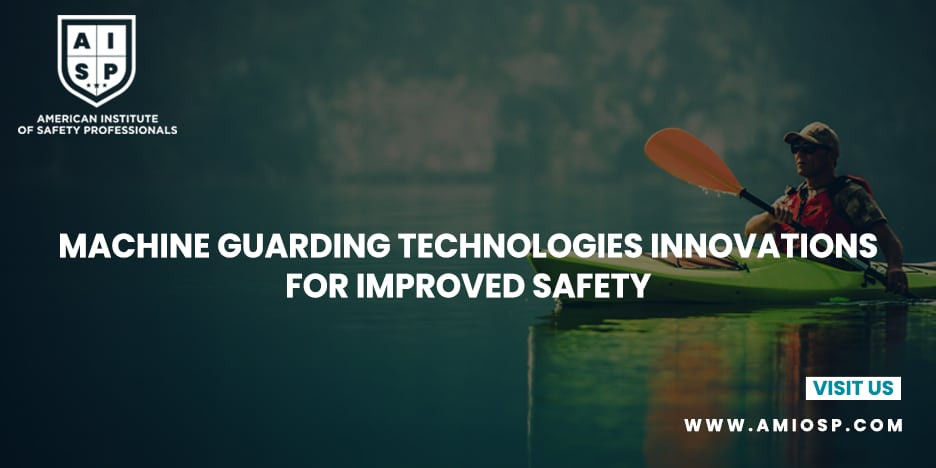In today's fast-paced industrial world, ensuring worker
safety is of paramount importance. The use of machinery and equipment brings
numerous benefits to businesses, but it also presents potential risks. To
mitigate these risks and protect workers, machine-guarding technologies have
emerged as innovative solutions that provide enhanced safety measures. In this
blog post, we will explore the importance of machine guarding technologies and
delve into some of the recent advancements that are revolutionizing workplace
safety.
Understanding the Significance of Machine Guarding
Machine guarding refers to the installation of protective
barriers or devices around machinery to prevent accidental contact with
hazardous moving parts. It acts as a physical barrier between workers and
potential sources of injury, reducing the likelihood of accidents and promoting
a safer work environment. Properly designed and implemented machine guarding
measures not only safeguard workers but also contribute to increased
productivity, decreased downtime, and regulatory compliance.
Advancements in Machine Guarding Technologies
Integrated
Sensors and Automation
Modern machine guarding technologies are incorporating advanced sensors
and automation systems to enhance safety. These sensors can detect the
presence of workers in hazardous areas and automatically halt the
machinery or trigger warning alarms. This proactive approach minimizes the
risk of accidents caused by human error or oversight.
Light
Curtains and Laser Scanners
Light curtains and laser scanners have become popular choices for machine
guarding. These devices create an invisible barrier using beams of light
and can detect any interruption, such as a hand or body part, within the
guarded zone. When an obstruction is detected, the machinery is instantly
stopped, preventing any potential injuries.
Safety
Interlock Systems
Safety interlock systems are designed to ensure that specific safety
conditions are met before a machine can be operated. These systems use
sensors to monitor various parameters, such as door closure, the presence of
guards, or the correct positioning of components. If any of these conditions
are not met, the machine remains inoperable, ensuring that workers are
protected from potential hazards.
Smart
Monitoring and Predictive Analytics
With the advent of the Internet of Things (IoT), machine guarding
technologies are leveraging smart monitoring and predictive analytics to
enhance safety measures. Connected sensors and devices collect real-time
data on machinery performance and operating conditions. This data is then
analyzed to identify potential safety risks or maintenance issues,
allowing for proactive measures to be taken before accidents occur.
Modular
and Flexible Guarding Solutions
Traditional machine guarding often involved fixed barriers that restricted
access to machinery. However, the need for flexibility in modern
workplaces has led to the development of modular and flexible guarding
solutions. These systems allow for easy installation, reconfiguration, and
maintenance, accommodating changes in machinery layout or production
processes while maintaining adequate safety levels.
Benefits and Future Outlook
The adoption of advanced machine-guarding technologies
brings numerous benefits to businesses and their employees. By prioritizing
worker safety, companies can reduce the occurrence of accidents, minimize
downtime due to injuries, and avoid costly legal penalties. Moreover, creating
a safe and secure work environment fosters employee morale, leading to
increased productivity and retention.
Looking ahead, machine-guarding technologies are expected to
continue evolving rapidly. Emerging trends such as artificial intelligence and
machine learning are likely to be incorporated into safety systems, enabling
machines to detect and respond to potential hazards with even greater
precision. Additionally, improved connectivity and data-sharing capabilities
will facilitate real-time monitoring, remote diagnostics, and proactive
maintenance, further enhancing workplace safety.
Conclusion
Machine guarding technologies have revolutionized workplace
safety by mitigating risks associated with machinery operations. Through the
integration of advanced sensors, automation, and predictive analytics, these
innovations have significantly reduced the likelihood of accidents and
injuries. As businesses prioritize worker safety, it is crucial to embrace
these technological advancements to create safer work environments. By doing so,
companies can protect their most valuable asset—their employees—and reap the
rewards of enhanced productivity and success in the long run.
Note: This blog post is for informational purposes only
and should not be considered as legal or professional advice. Always consult
with relevant experts and authorities for specific guidance on machine guarding
requirements and regulations.












0 comments
No Comments